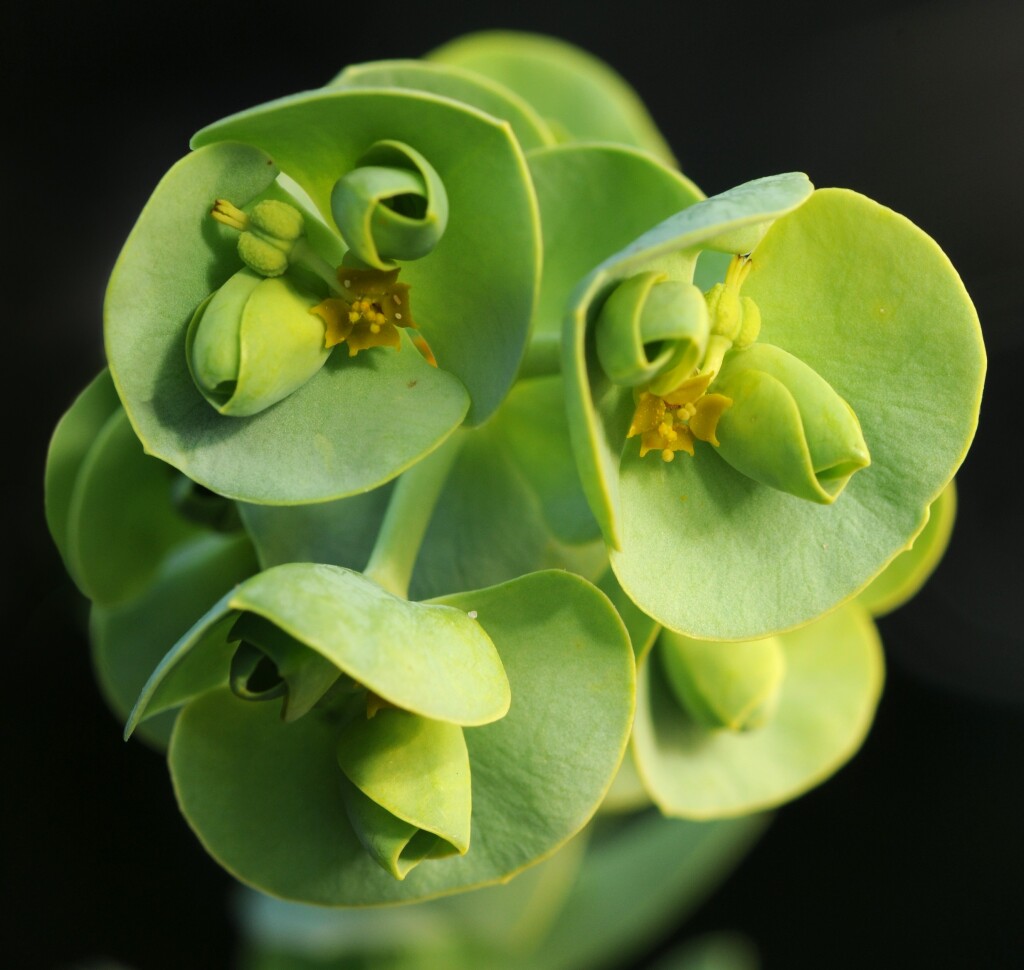Euphorbia paralias
L. Sea SpurgeErect perennial herb to c. 70 cm high, fleshy, glabrous, more or less glaucous; stems 1–9, each with 3–5 terminal fertile branches which are further branched. Cauline leaves sessile, crowded, imbricate, obovate-oblong to ovate, 5–25 mm long, 2–5 mm wide, fleshy, apex acute to obtuse, base obtuse to slightly cordate, margins entire; leaves on fertile branches suborbicular to rhombic or reniform, to 20 mm long, 15 mm wide, concave above. Cyathia solitary, in upper forks or terminal; peduncles to c. 0.5 mm long; involucre campanulate, c. 1.5 mm long; glands lunate, to c. 1 mm long, emarginate, with 2 short divaricate horn-like appendages; female flowers with styles divided into 2 short stigmas. Capsule depressed-globose, 3–5 mm long, 4.5–6 mm wide, deeply furrowed, wrinkled on keels; seeds ovoid-globose, 2.5–3.5 mm long, smooth, whitish, caruncle reniform, very small. Flowers Sep.–May.
Brid, GipP, OtP, WaP, EGL, WPro, HSF, OtR, Strz. Also naturalised WA, SA, NSW, Tas. Native to the Mediterranean, Europe and Siberia. A weed of sandy coastal areas, increasing in abundance and extent alarmingly since c. 1970 at e.g. Portland, Balnarring, Wilsons Promontory.
Jeanes, J.A. (1999). Euphorbiaceae. In: Walsh, N.G.; Entwisle, T.J., Flora of Victoria Vol. 4, Cornaceae to Asteraceae, pp. 55–82. Inkata Press, Melbourne.
 Spinning
Spinning



